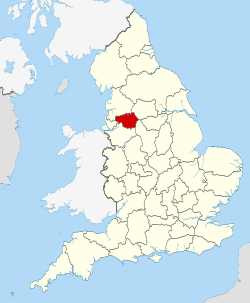 | |
 Map showing Greater Manchester, the executive's area of responsibility | |
| Abbreviation | TfGM |
|---|---|
| Predecessor | Greater Manchester Passenger Transport Executive |
| Formation | 1 April 2011 |
| Type | Public body |
| Purpose | Transport authority |
| Headquarters | Piccadilly Place, Manchester |
Region served | Greater Manchester |
Commissioner | Vernon Everitt |
Managing Director | Steve Warrener |
Parent organisation | Greater Manchester Combined Authority (GMCA) |
| Budget | £330.6 million |
| Website | www |
Transport for Greater Manchester (TfGM) is a local government body responsible for co-ordinating transport services throughout Greater Manchester in North West England. It is an executive arm of the Greater Manchester Combined Authority (GMCA), the city region's administrative authority. The strategies and policies of Transport for Greater Manchester are set by the GMCA and its Greater Manchester Transport Committee (GMTC). The committee is made up of 33 councillors appointed from the ten Greater Manchester boroughs (Bolton, Bury, Manchester, Oldham, Rochdale, Salford, Stockport, Tameside, Trafford and Wigan), as well as the Mayor of Greater Manchester. [1]
Contents
- History
- Governance
- Services
- Manchester Metrolink
- Heavy rail
- Buses
- Highways and cycling
- Fares, ticketing and information
- Bee Network
- Corporate identity
- See also
- References
- External links
TfGM owns Metrolink, which is operated and maintained under contract by a Keolis/Amey consortium. [2] [3] TfGM also owns Greater Manchester's cycle hire scheme, and is responsible for cycling and walking infrastructure. TfGM owns and maintains bus stations, stops & shelters, however bus services are deregulated in Great Britain outside London. Following the passing of the Bus Services Act 2017, Greater Manchester became the first city-region to start the process of bus franchising, returning bus services to public control. [4] [5]
TfGM is responsible for developing the Bee Network, an integrated transport network for Greater Manchester. The Bee Network is proposed to include a single transport livery, integrated fares & ticketing, and a fare cap across tram, bus, cycling, walking, and eventually suburban rail. In January 2025, all Metrolink trams and franchised buses services were integrated, along with cycle hiring services. [6] Negotiations with central government have led to the agreement that eight commuter lines across Greater Manchester and North Derbyshire will be progressively transferred to TfGM control of fare and service specification between December 2026 and December 2028 with the introduction of multi-modal fare caps with tram and bus, tap and go ticketing, and 64 rail stations refurbished and branded Bee Network. The remaining 32 stations across Greater Manchester lying on other rail lines will then follow by 2030. [7]









